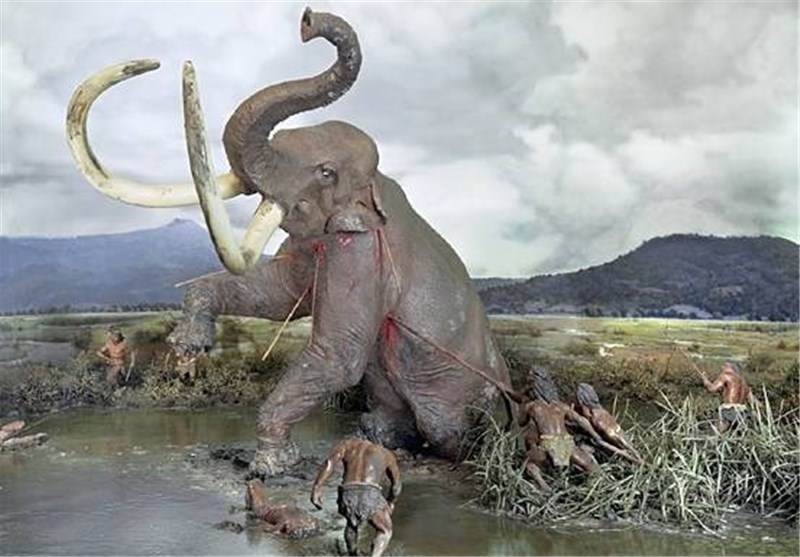Giant Prehistoric Elephant Slaughtered by Early Humans
TEHRAN (Tasnim) - Archaeologist found that early humans, who lived thousands of years before Neanderthals, were able to work together in groups to hunt and slaughter animals as large as the prehistoric elephant.
Dr Francis Wenban-Smith of University of Southampton discovered a site containing remains of an extinct straight-tusked elephant (Palaeoloxodon antiquus) in 2003, in an area of land at Ebbsfleet in Kent, during the construction of the High Speed 1 rail link from the Channel Tunnel to London.
Excavation revealed a deep sequence of deposits containing the elephant remains, along with numerous flint tools and a range of other species such as; wild aurochs, extinct forms of rhinoceros and lion, Barbary macaque, beaver, rabbit, various forms of vole and shrew, and a diverse assemblage of snails. These remains confirm that the deposits date to a warm period of climate around 420,000 years ago, the so-called Hoxnian interglacial, when the climate was probably slightly warmer than the present day.
Since the excavation, which took place in 2004, Francis has been carrying out a detailed analysis of evidence recovered from the site, including 80 undisturbed flint artifacts found scattered around the elephant carcass and used to butcher it. The pre-historic elephant was twice the size of today's African variety and up to four times the weight of family car.
"Although there is no direct evidence of how this particular animal met its end, the discovery of flint tools close to the carcass confirm butchery for its meat, probably by a group of at least four individuals,” Dr Wenban-Smith said.
"Early hominins of this period would have depended on nutrition from large herbivores. The key evidence for elephant hunting is that, of the few prehistoric butchered elephant carcasses that have been found across Europe, they are almost all large males in their prime, a pattern that does not suggest natural death and scavenging. Although it seems incredible that they could have killed such an animal, it must have been possible with wooden spears…We know hominins of this period had these, and an elephant skeleton with a wooden spear through its ribs was found at the site of Lehringen in Germany in 1948,” he added.
The discovery of this previously undisturbed Elephant grave site is unique in Britain -- where only a handful of other elephant skeletons have been found and none of which have produced similar evidence of human exploitation.





